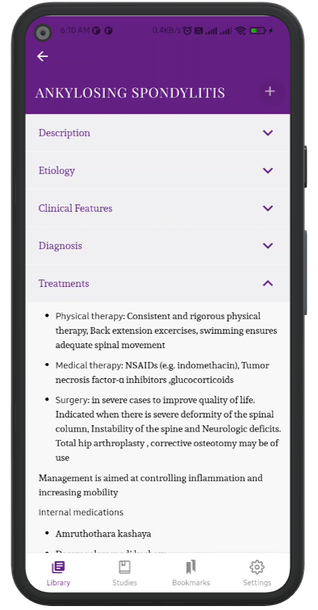VARICOSE VEINS
Description
- Dilated, tortuous and elongated superficial veins of the limbs are called varicose veins
- Most commonly affected is superficial venous system of lower limb affecting either the long saphenous or the short saphenous vein or both
Types
Symptoms
- Tired and aching sensation in the affected lower limb, at the end of the day
- Dragging pain
- Throbbing/cramping in legs
- Patient may present with no other symptom except dilated and tortuous veins of the leg
- Mild swelling on ankle and feet
- The skin over the varicosities may itch. It may be pigmented
- Eczema of the affected skin
- Venous ulceration
Investigation
Brodie-Trendelenberg test- The patient is asked to lie on the couch in the supine position. The leg is elevated above the level of heart and the vein emptied. SF junction is occluded with the help of the thumb (or a tourniquet) and the patient is asked to stand
- Trendelenburg I: Release the thumb or tourniquet immediately. Rapid gush of blood from above downwards indicates saphenofemoral incompetence
- Trendelenburg II: The pressure at the SF junction is maintained without releasing the thumb or tourniquet. The patient is then asked to stand. Slow filling of the long saphenous is seen. It is due to perforator incompetence (retrograde flow of blood)
Morrissey’s test or Cough impulse test : Done in the standing position. The examiner keeps the finger at SF junction and asks the patient to cough. Fluid thrill, an impulse felt by the fingers, is indicative of saphenofemoral incompetence
Schwartz test: It is done with the patient in the standing position. Place the fingers of the left hand over a dilated segment of the vein and with the right index finger tap the vein below. A palpable impulse suggests a superficial column of blood in the vein and it also suggests incompetence of the valves in between the segment of the vein
Modified Perthes test: It is done to rule out deep vein thrombosis. The patient is asked to stand and the tourniquet is applied at SF junction and he is asked to have a brisk walk. If the patient complains of severe pain in calf region or if the superficial veins become more prominent, it is an indication of deep vein thrombosis and is a contraindication for surgery
Tourniquet test- to find out exact site of perforators
Fegan's method (test): It is done to detect the site of perforators. The patient is asked to stand. The varicosity is marked with methylene blue and he is asked to lie down. The leg is elevated to empty the vein and the vein is palpated throughout its course. The defects in the deep fascia have a circular, buttonhole consistency
Venous Doppler study
Duplex scan - Mickey mouse sign , Saphenous eye sign
Venography
Treatments
Palliative treatment
- Avoidance of prolonged standing
- A crepe bandage or elastic stockings are applied from the toes to the thigh. Should be worn all throughout the day and is only taken off during sleep
- Elevation of limbs during sleep
- Exercises to strengthen calf muscles
Operative treatment
- Ligation and vein stripping
- Multiple cosmetic phlebectomy
- Fegan’s injection and compression treatment
Ayurvedic Treatment
Internal medicines
- Sahacharadi kashaya
- Saptasara kashaya
- Rasna erandadi kashaya
- Manjishtadi kashaya
- Kanchanara guggulu
- Kaisora guggulu
- Hinguvachadi choorna
- Partharishta
- Sahacharadi taila
Procedure
- Rakta-mokshana
- Reverse Abhyanga with Sahacharadi taila/ Karpooradi taila/ Karpasasthyadi taila
Department
Salya Tantra

